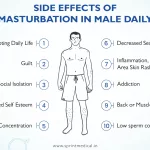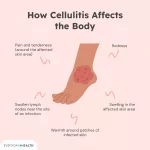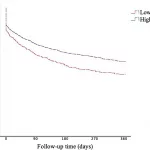What is an HMO‑POS Medicare Advantage plan? It’s a hybrid insurance option that blends the low‑cost, coordinated‑care vibe of a Health Maintenance Organization (HMO) with the “just‑in‑case” flexibility of a Point‑of‑Service (POS) plan. In plain English: you get a primary care physician (PCP) who guides you, but you also have a limited back‑door to see out‑of‑network providers when you really need to.
Who should consider an HMO‑POS? If you love the idea of low premiums and a trusted PCP, yet you worry that a specialist you need might be out of the network, this plan could be a sweet spot. Think of it as a safety net that doesn’t cost as much as a full‑blown PPO.
Quick Answers
Let’s jump straight into the burning questions you probably typed into Google this morning.
What does HMO‑POS stand for?
HMO‑POS means Health Maintenance Organization – Point of Service. The “POS” part signals that the plan allows limited out‑of‑network care, usually for a higher price.
Do I need a referral?
Most HMO‑POS plans require a referral from your PCP before you see a specialist, even if the specialist is out‑of‑network. It’s a good idea to check your specific plan’s rules—sometimes a prior authorization is also needed.
Are prescription drugs covered?
Nearly all HMO‑POS plans bundle a Medicare Part D (MAPD) drug benefit, though the copay tiers can differ between in‑network and out‑of‑network pharmacies.
How much can an out‑of‑network visit cost?
Out‑of‑network costs vary, but they typically involve a separate deductible and a higher coinsurance—often 40‑60 % of the service price. You’ll see the exact numbers in the plan’s Summary of Benefits.
Core Features
Network Structure & PCP
You’ll select a primary care physician who becomes your health “quarterback.” They coordinate routine visits, preventive care, and referrals. As Aspire Health Plan explains, staying within the network usually means lower out‑of‑pocket costs.
Referral & Authorization Rules
Think of referrals like traffic lights—green means you can go, red means you need to stop and get permission. Most HMO‑POS plans require a PCP referral for specialty care, and some services (like mental health) may need prior authorization even if they’re in‑network.
Cost Snapshot
| Cost Element | In‑Network | Out‑of‑Network |
|---|---|---|
| Premium | Usually low (e.g., $0‑$30/month) | Same as in‑network (plan‑specific) |
| Deductible | $0‑$250 (varies) | Separate, often higher (e.g., $500‑$1,000) |
| Copay / Coinsurance | Low copays ($20‑$30) or 0 % after deductible | Higher coinsurance (40‑60 % of charge) |
| Out‑of‑Pocket Max | $3,500‑$5,000 (individual) | Separate max, usually larger |
Prescription Drug Coverage
Most HMO‑POS plans include a MAPD (Medicare Advantage Prescription Drug) benefit. The drug formulary is often tiered—brand‑name drugs cost more, and some out‑of‑network pharmacies may charge a higher dispensing fee.
Supplemental Benefits
Beyond medical care, many HMO‑POS plans bundle extra perks: vision exams, dental cleanings, hearing aids, and even fitness‑class memberships. According to Medical News Today, these supplemental benefits can be a decisive factor for seniors who want more “all‑in‑one” value.
Benefits vs Risks
Why People Love HMO‑POS
- Lower premiums than PPOs, which can be a relief on a fixed income.
- Coordinated care improves continuity—your PCP knows your history.
- Out‑of‑network option provides flexibility for rare specialist needs.
Potential Drawbacks
- Higher out‑of‑network costs can surprise you if you’re not careful.
- Referral bottlenecks may delay specialist appointments.
- Plan availability varies by ZIP code; not every insurer offers an HMO‑POS where you live.
Real‑World Example
Maria, 68, lives in a small town in Ohio. Her original HMO didn’t cover a cardiologist in the nearest city, so she had to drive 150 miles for care. After switching to an HMO‑POS, she kept her trusted PCP but could see the out‑of‑network cardiologist when needed, paying a $300 deductible and a 45 % coinsurance—still far cheaper than a full PPO.
Plan Comparisons
HMO vs HMO‑POS
| Feature | HMO | HMO‑POS |
|---|---|---|
| Network Flexibility | Strictly in‑network | Limited out‑of‑network option |
| PCP Requirement | Mandatory | Mandatory |
| Referral Needed | Yes | Yes (often for out‑of‑network) |
| Typical Premium | Low | Low‑to‑moderate |
| Out‑of‑Pocket Costs | Lowest | Slightly higher (out‑of‑network) |
PPO vs HMO‑POS
| Aspect | PPO | HMO‑POS |
|---|---|---|
| Network Choice | Can go anywhere; in‑network is cheaper | Primarily in‑network; limited out‑of‑network |
| PCP Requirement | None | Yes |
| Referral Needed | Usually not | Yes, especially for specialists |
| Premium | Higher | Lower |
| Out‑of‑Pocket Max | Higher | Lower (in‑network) |
Who Should Enroll?
Grab a notebook and walk through this quick checklist. If most items light up green for you, an HMO‑POS could be a match.
- Do you have a PCP you trust? The plan hinges on that relationship.
- Do you need occasional out‑of‑network specialists? If yes, the POS feature adds peace of mind.
- Is a lower premium a priority? HMO‑POS plans usually cost less than PPOs.
- Are you comfortable with referrals? You’ll need them for most specialist visits.
- Is your ZIP code covered? Use the Medicare Plan Finder to confirm availability.
Choosing & Enrolling
Step 1 – Confirm Eligibility
You must be enrolled in both Medicare Part A and Part B. The HMO‑POS is a Medicare Advantage (Part C) overlay.
Step 2 – Review the Summary of Benefits (SoB)
The SoB is your roadmap. Look for two columns: “In‑Network” and “Out‑of‑Network.” Spot the separate deductible and copay numbers. If the language feels dense, call the insurer’s member services line—they’re required to explain it in plain English.
Step 3 – Side‑by‑Side Comparison
Tools like Medicare.gov’s Plan Finder let you compare premiums, drug formularies, and out‑of‑pocket limits across all HMO‑POS options in your county.
Step 4 – Verify PCP & Provider Lists
Call your chosen PCP’s office and ask: “Are you in the XYZ HMO‑POS network?” Double‑check any specialist you rely on—especially if they’re the reason you’re considering POS flexibility.
Step 5 – Enroll
Enroll during the Annual Election Period (Oct 15 – Dec 7) or a Qualified Special Election Period (e.g., moving to a new ZIP code). You can sign up online, over the phone, or via a licensed Medicare broker.
Expert Tips & Trusted Resources
“Always read the out‑of‑network deductible line—most seniors overlook that cost,” advises Jane Patel, a certified Medicare counselor with 15 years of experience. She also recommends keeping a simple spreadsheet of your annual medical expenses to see whether the lower premium truly saves you money.
For deeper dives, consider these reputable sources:
- Medicare.gov – Official plan comparison tools.
- CMS – Policy details and the latest rule changes.
- Healthline – Plain‑language breakdowns of costs and benefits.
Conclusion
Medicare Advantage HMO‑POS plans sit in the sweet spot between cost‑saving HMO plans and the flexibility of a PPO. They give you a trusted primary care doctor, lower premiums, and a safety valve for those occasional out‑of‑network visits that could otherwise leave you stuck. The decision boils down to three questions: do you have a reliable PCP, do you need occasional specialist freedom, and does your budget favor lower premiums over unrestricted choice?
If you’ve made it this far, you already have a head start. Grab the checklist, peek at the Summary of Benefits, and talk to a Medicare counselor before the enrollment window shuts. Your health, your wallet, and your peace of mind deserve a plan that fits—just like a well‑tailored sweater.
What’s your experience with HMO‑POS plans? Have you found a hidden gem in your county, or are you still weighing options? Drop a comment, share your story, or ask a question—let’s navigate this Medicare maze together.


















Leave a Reply
You must be logged in to post a comment.